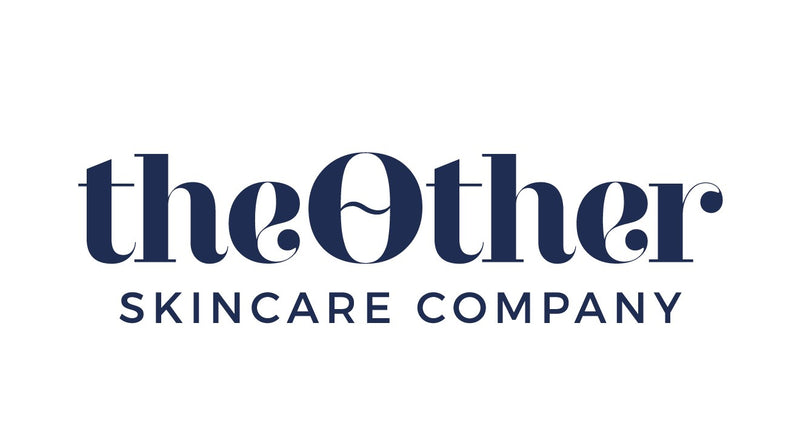Skin hyperpigmentation – different types, available treatments and best ingredients to look for

Hyperpigmentation is one of those pesky things that creep up on you - you look in the mirror one day and notice little irregular dark spots that seemed to have sprouted up out of nowhere. These randomly splattered brown marks on your face aren’t the cute kind of spots like freckles are, either and getting rid of them can be tricky. Patience is the name of the game, despite the seeming ease and speed to which they have come to take up territory on your face.
Some types of hyperpigmentation, like the dark or red spots that are left behind after a bad breakout, will slowly fade over several months. Other types however, caused by sun exposure or hormonal changes, may take ongoing treatments both at home and in clinic to see improvement.
So what is hyperpigmentation? It literary means “excess pigment”. It’s an umbrella term used to describe a common skin condition that affects all skin types and ages. If you have hyperpigmentation, you will start to see patches of skin that have become darker than the surrounding skin area. This darkening happens because of an excess of melanin - a natural pigment that determines your skin, hair and eye colour. These dark spots usually appear on the face, hands and any other parts of the body where the skin is regularly exposed to the sun.
Understanding the different types of hyperpigmentation is key to improving them. Successful treatment will depend on being able to determine what type of hyperpigmentation you have, then coming up with the proper treatment.
Common Types of Hyperpigmentation
The 3 most common types of hyperpigmentation are:
- Post inflammatory hyperpigmentation (PIH)
- Sn spots (also known as liver spots or solar lentigines)
- Melasma
PIH tends to occur more in people with medium to darker skin tones. It’s caused by the overproduction of melanin after an inflammation. It can happen after acne, bug bites, cuts, scrapes, eczema, psoriasis, or dermatitis, for example. The severity of hyperpigmentation is going to depend on the severity of inflammation. So, the most important thing to remember is to leave your skin alone, even if you have the urge to pick, scratch, or rub your pimples or bug bites. Take care of your skin and let it heal.
Sun spots are caused by exposure to UV-rays and sun damage, and can happen anywhere your skin is exposed to the sun regularly. It also tends to occur more in lighter skin tones.
Melasma is a skin condition characterized by brown or blue-gray patches or freckle-like spots and is a chronic form of hyperpigmentation that occurs most often in women, especially on the face. It’s triggered by UV-exposure, heat, genetics, as well as hormonally influenced conditions like pregnancy, menopause and the use of birth control pills. It’s usually the trickiest to treat and control, although some women see it fade after pregnancy or stopping contraceptive use.
Yes, it’s easier said than done, but prevention is the best way to avoid or at the very least limit the amount and severity of hyperpigmentation. For all 3 types, regular use of a broad-spectrum sunscreen is the name of the game. It’s the best defense against triggering or worsening hyperpigmentation. For HIP, addressing the root cause of the inflammation is number one (acne or eczema for example), but sunscreen is also crucial to minimize further pigmentation.
Thankfully, there are several good options for treatments, ranging from at home topical treatments, to in-office chemical peels and lasers. For many people, topical treatments consisting of the right active ingredients are the safest, easiest and most economical way to tackle hyperpigmentation. Here are some helpful science backed ingredients.
Best Skincare Actives for Hyperpigmentation
Vitamin C
This overall amazing active is a true multitasker, but it’s especially beneficial when it comes to hyperpigmentation. It’s one of the most powerful antioxidants in skincare. It protects the skin from UV light and free radical damage, and blocks the production of abnormal pigmentation. It also brightens the skin and helps repair existing sun damage.
Alpha Hydroxy Acids (AHAs)
Speeding up cell turnover is helpful in treating hyperpigmentation, because what we want to do is help the hyperpigmented skin to be replaced by new skin cells. This is where Alpha Hydroxy Acids (AHAs) are useful, as they help in exfoliating the skin by speeding up cell turn over. There are several types, including glycolic acid and lactic acid, which come in various concentrations. It can cause skin sensitivity, so it’s important to use the right formulation, frequency, and concentration for your skin.
Vitamin A
Another powerhouse when it comes to aiding cell turnover. Retinoids are the family of Vitamin A derived molecules, and comes in various forms. Retinol is what you will find most often in skincare products without a prescription. Retinoids switch on receptors that we have in the skin, which then leads to increased cell turnover, unclogging of pores, and stimulation of collagen production. It is prone to cause skin sensitivity and irritation however, so you do need to find the right formula, then start slow to build up your tolerance.
Niacinamide
Niacinamide (or Vitamin B3), is a beautiful ingredient that does so much good for the skin, but without causing the sensitivities that most people find with AHAs or retinoids. It’s well tolerated, and almost everyone (including pregnant and breast feeding women) can benefit from it. It’s helpful for acne prone skin due to its anti-inflammatory action. It calms and brightens the skin as well as improve skin tone and skin radiance.
Glucosamine
Glucosamine is a “skin identical ingredient”, meaning it’s found in our skin in the spaces between the cells, and it is used to maintain skin’s barrier abilities and reduce dryness. Studies have shown that N-Acetyl Glucosamine (NAG) can increase collagen production, increase moisture content of the skin, increase skin elasticity, increase exfoliation, and increase the speed of wound healing.
N-Acetyl Glucosamine has been shown to reduce hyperpigmentation and can be combined with niacinamide to further boost evening the skin tone. NAG can normalize the exfoliation of the stratum corneum, so it can be a good replacement for acid based exfoliation ingredients that might annoy sensitive or rosacea prone skin.
Azelaic acid
Often used for rosacea and skin redness, azelaic acid is an anti-inflammatory and antibacterial, but it also targets hyperpigmentation including pregnancy induced pigmentation. It’s well tolerated and is safe in pregnancy, which allows for its use in treating hormonal related hyperpigmentation. It also inhibits the activity of tyrosinase, a melanin producing enzyme, thus helping treat hyperpigmentation as well skin redness associated with rosacea.
Kojic acid
Derived from mushrooms, kojic acid is another fantastic ingredient that helps most types of hyperpigmentation, including melasma. Most people can tolerate it, except those with very sensitive skin. It also inhibits tyrosinase.
Licorice root
The gold standard when it comes to botanical actives, licorice has powerful anti-inflammatory and antioxidant properties that help neutralizing free radicals and thus preventing sun spots. It’s also another tyrosinase inhibitor and a very effective skin lightening agent.
Alpha Arbutin,
A molecule extracted from the bearberry plant, is yet another tyrosinase inhibitor, providing skin lightening and brightening effects. It’s safe for all skin types and is generally well tolerated.
Turmeric
The ground up root of the curcuma plant, has been used for centuries in Eastern medicine and in the ancient Indian Ayurvedic traditions. The active phytonutrient in turmeric, Curcumin, has powerful antioxidant and anti-inflammatory properties that can help treat acne, fine lines as well as hyperpigmentation.
Other Effective in Home Options
Dermarollers
LED light Therapy home devices
In Office Treatments
If the case of hyperpigmentation is particularly stubborn or when we are looking for faster results there are some in clinic treatments that could be very effective but beware of temporary side effects.
Chemical Peels
Laser
Intense pulse light therapy (IPL)
Dermabrasion
Hyperpigmentation can no doubt be a frustrating skin concern to treat. Don’t feel defeated, though. With a good understanding of the type of hyperpigmentation you have, consistent use of SPF, and some good skincare with the right ingredients, you are on your way to a good start in treating it. And if that’s not cutting it, consider a combination approach of in-office treatments (lasers, chemical peels or prescription topicals) with an at home routine of daily skincare, well formulated with some of these potent active ingredients.
